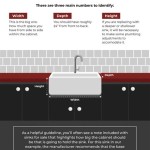```html
Kitchen Cabinet Cleaner Reviews: Finding the Right Solution for Sparkling Cabinets
Maintaining clean kitchen cabinets is crucial for overall kitchen hygiene and aesthetics. Kitchen cabinets are susceptible to accumulating grease, grime, food splatters, and dust, making regular cleaning essential. Selecting the appropriate kitchen cabinet cleaner can significantly impact the cleaning process's efficiency and the longevity of the cabinet finish. This article provides a detailed review of various kitchen cabinet cleaners, focusing on their ingredients, intended use, effectiveness, and potential drawbacks.
Understanding Different Types of Kitchen Cabinet Finishes and Their Cleaning Needs
Before selecting a kitchen cabinet cleaner, identifying the cabinet finish is paramount. Common kitchen cabinet finishes include painted, laminated, wood veneer, and solid wood with various sealants and stains. Each finish reacts differently to various cleaning agents. Using an inappropriate cleaner can damage the finish, leading to discoloration, peeling, or etching. For instance, abrasive cleaners are generally unsuitable for painted or laminated surfaces, whereas oil-based cleaners are often preferred for wood cabinets to replenish moisture and prevent drying.
Painted cabinets often benefit from gentle, pH-neutral cleaners. Harsh chemicals can strip the paint or cause it to fade. Laminated cabinets, known for their durability and ease of cleaning, typically respond well to mild dish soap and water. However, prolonged exposure to excessive moisture should be avoided to prevent swelling at the seams. Wood veneer cabinets require careful cleaning to avoid delamination. Gentle cleaning solutions and soft cloths are essential to prevent damage to the thin layer of wood. Solid wood cabinets, especially those with intricate carvings, require cleaners specifically designed for wood to prevent drying and cracking. Regular conditioning with a furniture polish or oil can also help maintain the wood's natural luster and protect it from moisture.
Reviewing Popular Kitchen Cabinet Cleaning Products
The market offers a wide array of kitchen cabinet cleaning products, each with unique formulations and intended uses. Several popular options, including multi-surface cleaners, specialized cabinet cleaners, and homemade solutions, warrant a thorough examination.
Multi-Surface Cleaners:
These cleaners are designed for use on various surfaces, including countertops, appliances, and cabinets. While convenient for general cleaning, multi-surface cleaners may not always be the most effective or safest option for kitchen cabinets. Many contain harsh chemicals that can damage delicate finishes. It is crucial to carefully read the product label and test the cleaner on an inconspicuous area of the cabinet before applying it to the entire surface. Examples of popular multi-surface cleaners include brands like Mr. Clean and Lysol. These often contain strong surfactants and solvents that can effectively remove grease and grime but may also strip away the protective layers on cabinet finishes.Specialized Cabinet Cleaners:
These cleaners are specifically formulated for kitchen cabinets and are often gentler than multi-surface cleaners. They typically contain ingredients that are less likely to damage the finish and may include moisturizing agents to protect wood cabinets. Some specialized cabinet cleaners are designed for particular types of finishes, such as painted or wood cabinets. These cleaners often feature a balanced pH level to protect the integrity of the cabinet finish while still effectively removing dirt and grease. Popular brands in this category include Weiman and Howard Products. Weiman Cabinet Cleaner, for example, is designed to remove grease and grime without leaving a residue and is often praised for its ability to restore shine to wood cabinets. Howard Products Feed-N-Wax is another popular choice, particularly for wood cabinets, as it cleans and conditions the wood, helping to prevent drying and cracking.Homemade Cleaning Solutions:
Many homeowners opt for homemade cleaning solutions using readily available ingredients like vinegar, baking soda, and dish soap. Vinegar is a natural degreaser and disinfectant, while baking soda is a mild abrasive that can help remove stubborn stains. Dish soap is an effective cleaner for removing grease and grime. However, it is crucial to use these ingredients carefully and in the correct proportions. For instance, undiluted vinegar can be too acidic for some finishes and may cause damage. Similarly, using too much baking soda can scratch delicate surfaces. A common homemade solution involves mixing equal parts of white vinegar and water in a spray bottle. This solution can be used to clean various surfaces, including kitchen cabinets, but it is essential to test it on an inconspicuous area first. Another popular recipe involves mixing a small amount of dish soap with warm water. This solution is effective for removing grease and grime and is generally safe for most cabinet finishes. However, it is crucial to rinse the cabinets thoroughly after cleaning to remove any soap residue.Beyond these basic recipes, some homeowners add essential oils like lemon or orange to their homemade cleaners for their degreasing properties and pleasant scent. However, it's important to use essential oils sparingly and to dilute them properly, as some oils can damage certain finishes. For example, concentrated citrus oils can be corrosive and should be avoided on painted or laminated cabinets.
Key Considerations When Choosing a Kitchen Cabinet Cleaner
Selecting the optimal kitchen cabinet cleaner involves considering several factors, including the cabinet finish, the type of soil or stain being addressed, and the desired level of cleaning. Moreover, user reviews and safety considerations play a significant role in making an informed decision.
Cabinet Finish and Material:
As previously mentioned, identifying the cabinet finish is crucial. Some cleaners are specifically designed for certain finishes, while others may be too harsh or abrasive. Always read the product label carefully and test the cleaner on an inconspicuous area before applying it to the entire surface. For example, cleaners designed for wood cabinets often contain oils or waxes that can leave a residue on painted or laminated surfaces. Similarly, abrasive cleaners should be avoided on delicate finishes like painted or laminated cabinets, as they can scratch or damage the surface.Type of Soil or Stain:
Different types of soil or stains require different cleaning approaches. Grease and grime, common in kitchens, often necessitate degreasing agents. Water stains or mineral deposits may require acidic cleaners like vinegar or lemon juice. Stubborn stains, such as food splatters or dried-on spills, may require a combination of cleaning agents and gentle scrubbing. For grease stains, a degreasing cleaner or a solution of dish soap and warm water is often effective. For water stains or mineral deposits, a solution of vinegar and water can help to dissolve the minerals. For stubborn stains, a paste of baking soda and water can be applied to the stain and left to sit for a few minutes before being gently scrubbed away.Level of Cleaning Required:
The frequency and intensity of cleaning will also influence the choice of cleaner. For routine cleaning, a gentle, pH-neutral cleaner may suffice. For heavier cleaning, a more potent cleaner with degreasing or stain-removing properties may be necessary. Regular cleaning helps prevent the buildup of dirt and grime, making it easier to maintain the cabinets. For routine cleaning, a simple wipe-down with a damp cloth and a mild cleaner may be sufficient. For heavier cleaning, it may be necessary to use a stronger cleaner and to scrub the cabinets more thoroughly.User Reviews and Ratings:
Consulting user reviews and ratings can provide valuable insights into the effectiveness and safety of various kitchen cabinet cleaners. Pay attention to reviews that mention the cleaner's impact on specific cabinet finishes or its ability to remove particular types of stains. Consider the overall rating and the number of reviews to gauge the reliability of the feedback. Many online retailers and consumer review websites offer user reviews and ratings for kitchen cabinet cleaners. These reviews can provide valuable information about the cleaner's effectiveness, ease of use, and potential drawbacks.Safety Considerations:
Prioritize cleaners that are non-toxic, biodegradable, and free of harsh chemicals. Wear gloves and eye protection when cleaning, and ensure adequate ventilation in the kitchen. Always follow the manufacturer's instructions carefully. Consider the ingredients list and look for products that are free of potentially harmful chemicals such as chlorine bleach, ammonia, and strong solvents. Choose products that are labeled as non-toxic or biodegradable whenever possible. Always keep cleaning products out of reach of children and pets. When using cleaning products, wear gloves and eye protection to protect your skin and eyes from irritation. Ensure that the kitchen is well-ventilated to prevent the buildup of fumes. After cleaning, dispose of cleaning cloths and sponges properly to prevent the spread of germs.In conclusion, selecting the right kitchen cabinet cleaner requires careful consideration of the cabinet finish, the type of soil or stain, the desired level of cleaning, user reviews, and safety considerations. A well-informed decision will contribute to maintaining clean and aesthetically pleasing kitchen cabinets for years to come.
```
Reviews For Rejuvenate 24 Oz Cabinet And Furniture Cleaner Pg 5 The Home Depot

Reviews For Gel Gloss Cabinet Cleaner 24 Oz Pg 1 The Home Depot

Cabinet Cleaners Reviews Which S Work Best

How To Clean White Kitchen Cabinets 3 Best Ways Avoid Abbotts At Home

Weiman 16 Oz Fl Cabinet And Wood Cleaner Polish 332 The Home Depot

Rejuvenate Cabinet And Furniture Cleaner Streak Residue Free

Weiman 16 Oz Fl Cabinet And Wood Cleaner Polish 332 The Home Depot

How To Clean White Kitchen Cabinets 3 Best Ways Avoid Abbotts At Home

How To Clean Wood Kitchen Cabinets

My 6 Top Picks For Degreasing Kitchen Cabinets Before Painting
Related Posts








